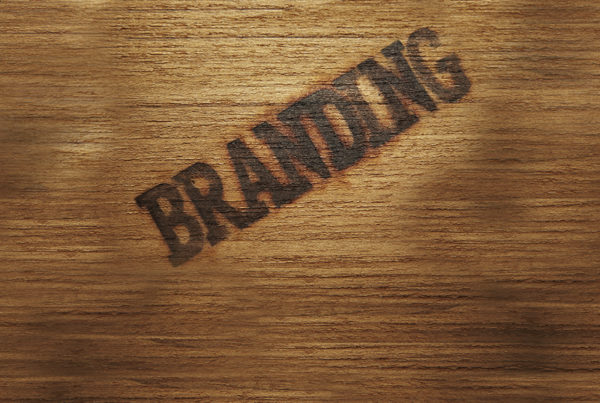Print vs Digital – where should you spend your money?
When budgets are stretched, traditional print marketing often gets the chop to be replaced with a digital alternative. Saving money on marketing is prudent, but it must be about spending your budget wisely. The greatest challenge facing print media is digital technology.
What is print marketing?
Print marketing usually refers to advertising space in newspapers, magazines, newsletters, and other printed materials intended for distribution. Direct mail marketing uses printed material like postcards, brochures, letters, and flyers. What type of ‘print’ you use and how you use it is very much dependent on what you want to achieve or how you want your customers to respond. Whatever format you use, visually attractive, high-quality print will instantly engage attention and is more likely to solicit a positive response
Is classic print still in demand?
Print advertising has long been considered the classic option in newspapers and magazines to achieve a highly visible and effective campaign. However, research conducted by NewZoo found that newspapers and magazines are losing ground. Almost one third of the UK population (31%) spend less than 1 hour a week reading print, while 14% admit to not reading any newspapers or magazines at all. That’s nearly half the UK population spending less than an hour a week consuming print.
Channel your content
Print is not just about advertising, today it’s about brands choosing the right channel to distribute relevant, targeted ‘content’. For example, newspapers have scrambled to put their content online. Yet many readers prefer scouring social media to browsing the digital versions of conventional papers and magazines. However, in a retail environment, consumers say that it’s print advertising that most influences their shopping choices and so could be a vital tipping point to encourage purchase.
What’s the digital alternative?
Digital can certainly be a more economical approach to costly printed materials. Brands are able to quickly and easily reach their target audience and, in most cases, for less money. For example, under two-thirds of companies are spending £5,000 per year on email marketing yet more than half of businesses achieve 10% of their sales through this medium. Indeed, electronic direct mail that includes personalised URLs usually see a boost in response rate of 3 to 5 times. Email marketing can be inexpensive but there’s little point using it if your market is a demographic that will better respond to a printed glossy brochure.
Social media can’t be ignored either. It produces almost double the marketing leads of trade shows, telemarketing, direct mail or PPC. Gone are the days of printing and physically posting press releases. In 2013, 75% journalists say they want a video in their online press release. Overall, digital media is a direct response vehicle and threatens newspapers more than print media, but to succeed it is must be compatible across all platforms.
Is print dead?
Think about it – when you go to the dentist or are on a flight, what do you pick up? A survey found nearly 187 million magazine reading adults in the U.S.; 44% claimed ”no interest in reading their magazines in a digital format”.
Further research shows the conversion rate from a print (physical) campaign can be much higher than its online equivalent. Another survey asked how often ads are noticed among users of traditional media, 86% say they “always” or “sometimes” notice and direct mail (82%). When it comes to digital media, 71% of Internet users say they “always” or “sometimes” notice search engine ads and 66% say they notice ads appearing on social media platforms. They might see them, but do they respond to them?
So if you had to choose…
There will always be a need for print and evidence shows it deserves its place within mainstream media. For example, a high quality poster can be visually captivating and draw the eye from even 30 feet away. Digital represents a more modern, targeted and dynamic approach to generating responses. It can reach out to a much broader target audience with greater precision than its more traditional competitors. However, if want your campaign to be results-driven, physical campaigns have a higher conversion rate than online equivalents.
Digital technology, and particularly the growth of mobile provides many opportunities for brands to integrate the physical world with digital. Research published by EConsultancy found that just under two thirds of respondents are including information on offline locations, contact details and opening hours on their websites. This is particularly relevant in retail environments.
Cross media marketing – integrating traditional print and digital – is a strategic solution to maximise your budget. Brands have found 62% of online campaigns are seeing an increased ROI when combined with offline marketing such as direct mail. The journey can start with an offer in a print mailer to drive a prospect to respond online. A specific landing page can, in turn, measure the effectiveness of your integrated campaign. Above all, maintain a visual connection to create a seamless experience that’s consistent across all online and offline channels.
Sources:
www.econsultancy.com/uk/blog/62969-are-companies-merging-the-digital-and-physical-customer-experience?utm_medium=email&utm_source=daily_pulse
www.slideshare.net/MarketPathAC/integrating-traditional-digital-marketing-for-maximum-impact
www.econsultancy.com/uk/press-releases/7127-gaming-vs-print-where-does-print-sit-in-today-s-media-landscape
www.rootstudio.co.uk/blog/post.php?s=2013-04-19-print-vs-digital-marketing
Marketing Comms: print or digital, which one is best
Print vs Digital.
Marketing-comms-print-or-digital-which-one-is-best
Send download link to:




